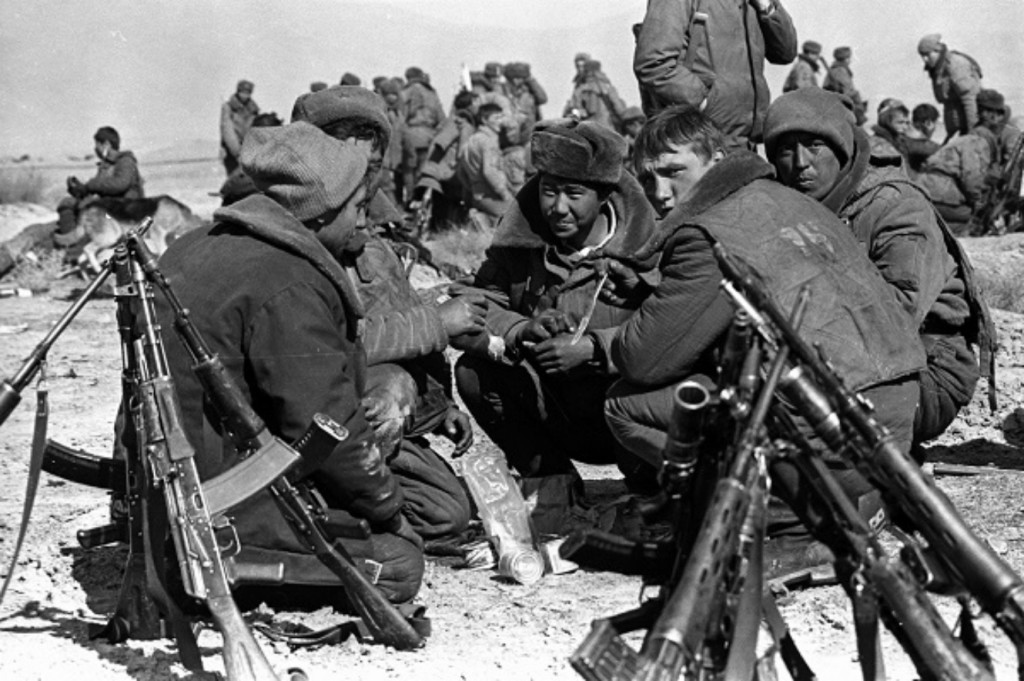Boozing through the Soviet–Afghan War was More Horrifying than You Can Imagine

Soldiers love to drink. Russians love to drink. No wonder that Russian soldiers can be amongst the hardest-core boozers around. If anything, this was even more the case in Soviet times when the very difficulties of getting hold of booze acted as a spur to the ingenuity for which Russians are also rightly known. The same guys who could fix a tank engine with sticky tape or make the world’s toughest rifle were formidable and innovative in their quest for a drink.
Being assigned to the ground crew on a MiG-25 interceptor, for example, was a good gig. The supersonic fighter was nicknamed gastronom — delicatessen — because its nose-mounted radar and generator were cooled by more than 200 liters of water/methanol mix, which is a ghastly brew, but as a base not much more ghastly than the murderous samogon homebrew many Soviets turned to, especially during Mikhail Gorbachev’s well-meant but ill-thought-through anti-alcohol campaign. The usual rule of thumb was a single shot a day. Any more, and your chances of going blind were good.
As it should now be clear to you, dear reader, Soviet soldiers were not that discriminating when sourcing their sauce. When I was interviewing veterans of the Soviet–Afghan War for my doctorate, many and horrifying were the accounts of parties fueled by aftershave, rosewater, and rubbing alcohol. The military hierarchy denied the enlisted men legal access to drink, yet fighting a high-stress and — in the early years, at least — officially unacknowledged war, they were nothing if not committed to the quest.
Boot polish, for example, would be spread on a hunk of bread, which was then toasted. The alcohol in the polish would soak into the bread; the polish itself would crisp on the surface of the toast. You’d scrape off as much as you could, then eat the bread. The same could be done with some ethanol-based toothpastes.
Alternatively, take that polished bread, sit it on top of a glass of water over night, and then drink it, as a certain amount of alcohol will have infused it. And then eat the bread, hoping it hasn’t gotten moldy in the meantime.
If you had the misfortune to be based in one of the so-called “eagle’s nest” observation posts up in the mountains, where supplies were heaved out of an Mi-8 helicopter precariously balancing one of its wheels on the slope, then you needed to turn to your surroundings. Some solvents used for cleaning weapons contained ethanol along with all kinds of toxic additives. Pour some into a metal pan and then leave it out for a while in the bitter Afghan winter; the belief was that the ethanol would stay liquid, atop a frozen layer of everything else. Fortunately, such solvents were often in scarce supply.
The soldiers would also — despite official warnings not to, as much to avoid poisoning as anything else — buy drinks from Afghan traders. Ranging from the internationally renowned brandies of the Afghan-Clemd distillery to rotgut brewed in backstreet stills, the drinks on sale, especially at venues dotting Kabul’s Chicken Street bazaar, were numerous. The Soviet Commandant’s Service military police patrols meant to prevent off-duty soldiers from stocking up on drink would, instead, “tax” their victims a share of their purchases. As one soldier reminisced, “it’s the only time in my military career I actually didn’t mind wearing the red armband” of a patroller.
The field expedients the Soviets poured into their hapless bodies may have brought a degree of oblivion to their wartime misadventures. These noxious and innovative drinks were competing with the opium that was so readily available and also with such alternatives as chifir’, a punishingly strong tea that was actually used in the Gulags to induce a mild high or stave off pain and exhaustion. They also contributed to as much as 20 percent of the cases addressed by the Military-Medical Service in Afghanistan. One army doctor recounted to me a tale of having to operate on a soldier hit by shrapnel from a rebel mortar, whose innards still smelled of cheap cologne.
Stalin reportedly encouraged the distribution of 100 grams of vodka — equivalent to a double shot — to soldiers before an assault. It remains to be seen whether in the Donbas, Moscow’s latest unacknowledged war, Stalin’s or Gorbachev’s rules apply.
Mark Galeotti is Professor of Global Affairs at New York University. Way back when he was doing his doctorate, he learned to claim he had liver problems just to avoid having to match Soviet veterans vodka shot by vodka shot.

